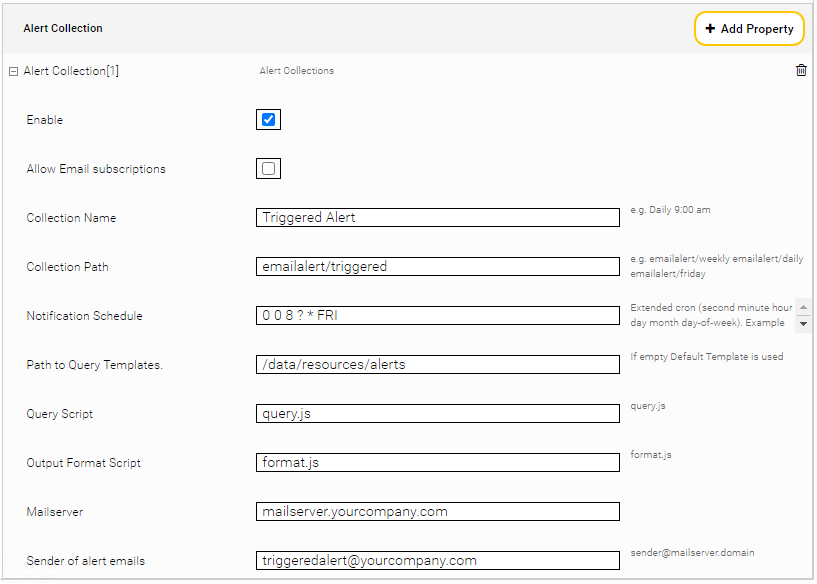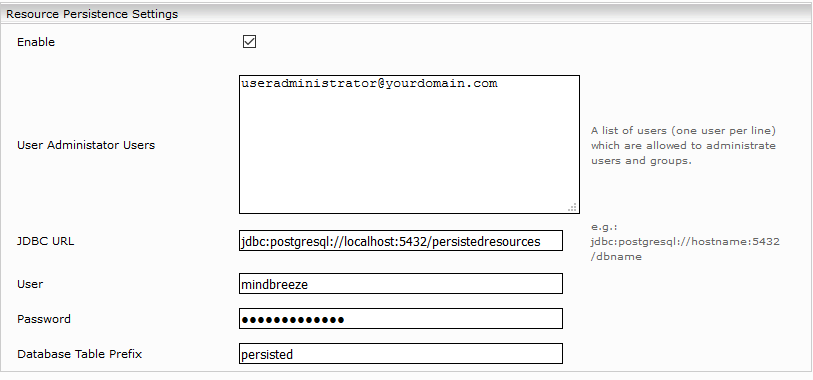api.v2.AlertsTrigger Interface Description
Overview
With Mindbreeze InSpire, you can trigger defined alerts using a simple interface. This interface is based on HTTP and JSON.
Alerts can be defined in the client service configuration:
If the Notification Schedule is empty, the alert isn't executed automatically and can only be triggered using the alerts trigger API. Of course, alerts that have a Notification Schedule can also be triggered at a specified time using the alerts trigger API.
Documentation and examples of cron expressions can be found here.
Triggering alerts using HTTP POST 
The alert trigger request is sent as HTTP POST to a client service. The path for saving the export request is as follows:
<Client Service URL>/api/v2/alerts/trigger
The request takes the following form:
{
“collection_path”: [“emailalert”, “triggered”]
}
This request will trigger “emailalert/triggered”, so that all users who have created alerts in this particular alert collection will receive their alerts.
If you need to further restrict the search query for the trigger, a constraint can be specified using a mindbreeze.api.v2.QuerExpr:
{
“collection_path”: [“emailalert”, “triggered”],
“constraint”: <QueryExpr>
}
In response, a status is returned that indicates whether the alert trigger was successful:
{
“status”: {
“success”: true,
“description”: “Success”
}
}
Authorizations for triggering alerts
Alerts can only be triggered by privileged users. By default, user-administrator users of persisted resources are authorized to trigger alerts. Users of the builtin_notificationtrigger group are also authorized to trigger alerts.


